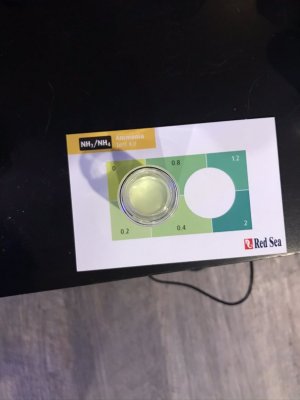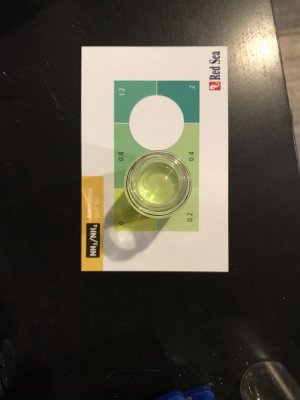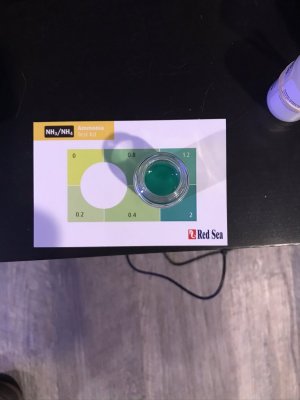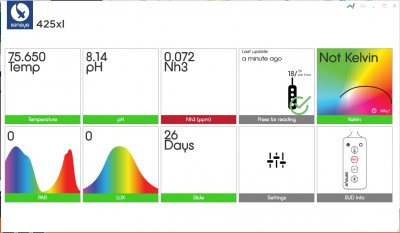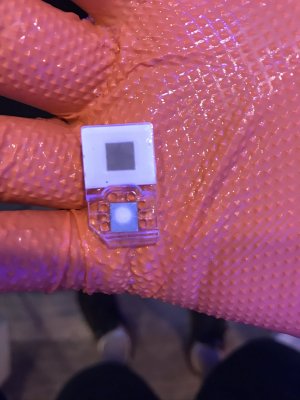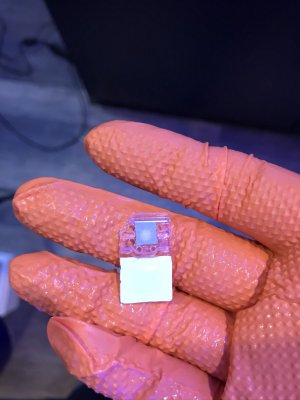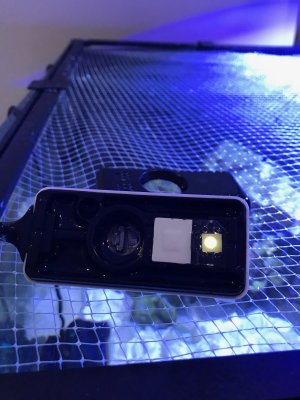The fish swimming midwater plus rocks and sand indicate no free ammonia as we hunt testing confounds
water clarity, massive surface area
free ammonia-fish can’t excrete ammonia through gills and they can’t respire there either, they twitch dart and aerotax to the top
top hovering of fish is a classic sign as well as requisite cloudy water. A source of ammonia constant enough to overcome that much surface area will boost water column bacteria and be cloudy as the surface area already didn’t have room for more bacteria, cycled reefs are full on the date the cycle completes.
one new rule that emerged out of the pattern of good seneye tests was that ammonia among that much surface area can’t ever hold or be continually rising, there’s no input source to overtake that much active surface area. Even two dead fish in that much dilution...seneye reports still showed control in the thousandths ppm
if adding straight ammonia was happening in top off water enough to overpower a reef, that source would be liquid cat litter waste smell.
if this aquarium has free ammonia confirmed by another seneye or some sort of trustworthy benchmark I’m going to need counseling as concepts will be blown I’ll have the total recall spaz, break things
a spike of ammonia - absolutely. Even a blast of feed will spike but we simply see steady state thousandths ppm returned very fast in everything but quarantine tanks. Dead tang in tank didn’t spike a seneye out of thousandths ppm on one standout post recently
I’m not sure what chemical could be making seneye read like that, can’t wait to find out. I look for total devastation of the tank within 48 hours if it’s truly unable to control ammonia, and I think a sustained dose of antibiotics is what it would take to myth busters cause it
water clarity, massive surface area
free ammonia-fish can’t excrete ammonia through gills and they can’t respire there either, they twitch dart and aerotax to the top
top hovering of fish is a classic sign as well as requisite cloudy water. A source of ammonia constant enough to overcome that much surface area will boost water column bacteria and be cloudy as the surface area already didn’t have room for more bacteria, cycled reefs are full on the date the cycle completes.
one new rule that emerged out of the pattern of good seneye tests was that ammonia among that much surface area can’t ever hold or be continually rising, there’s no input source to overtake that much active surface area. Even two dead fish in that much dilution...seneye reports still showed control in the thousandths ppm
if adding straight ammonia was happening in top off water enough to overpower a reef, that source would be liquid cat litter waste smell.
if this aquarium has free ammonia confirmed by another seneye or some sort of trustworthy benchmark I’m going to need counseling as concepts will be blown I’ll have the total recall spaz, break things
a spike of ammonia - absolutely. Even a blast of feed will spike but we simply see steady state thousandths ppm returned very fast in everything but quarantine tanks. Dead tang in tank didn’t spike a seneye out of thousandths ppm on one standout post recently
I’m not sure what chemical could be making seneye read like that, can’t wait to find out. I look for total devastation of the tank within 48 hours if it’s truly unable to control ammonia, and I think a sustained dose of antibiotics is what it would take to myth busters cause it
Last edited:









